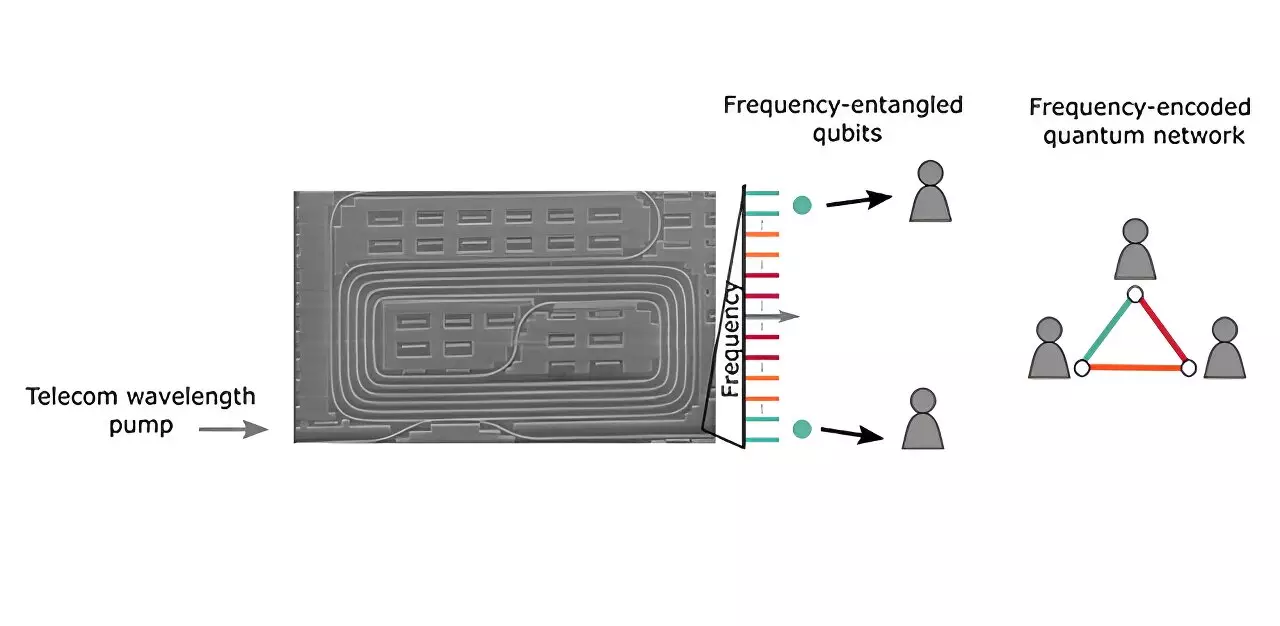The realm of quantum technology has reached new heights with a groundbreaking achievement in integrated photonics. Researchers have made significant progress in unlocking the potential of the frequency dimension within photon manipulation, paving the way for revolutionary advancements in quantum computing and secure communication networks.
In a recent study published in Advanced Photonics, a collaboration between the Centre for Nanosciences and Nanotechnology (C2N), Télécom Paris, and STMicroelectronics (STM) has yielded remarkable results. The development of silicon ring resonators with a footprint smaller than 0.05 mm2 has enabled the generation of over 70 distinct frequency channels spaced 21 GHz apart. This breakthrough allows for the parallelization and independent control of 34 single qubit-gates using only three standard electro-optic devices, marking a significant advancement in quantum technology.
The key innovation in this research lies in the exploitation of narrow frequency separations to create and control quantum states. Through the use of integrated ring resonators, researchers have successfully generated frequency-entangled states via spontaneous four-wave mixing. This technique enables photons to interact and become entangled, a critical component for constructing quantum circuits with the potential for practical application and scalability.
What sets this research apart is its practicality and scalability. By leveraging the precise control offered by silicon resonators, the researchers have demonstrated the simultaneous operation of 34 single qubit-gates using minimal electro-optic devices. This advancement opens the door to complex quantum networks where multiple qubits can be manipulated independently and in parallel, showcasing the power of integrated photonics in advancing quantum technologies.
To validate their approach, the research team conducted experiments at C2N, performing quantum state tomography on 17 pairs of maximally entangled qubits across different frequency bins. This detailed characterization confirmed the fidelity and coherence of their quantum states, marking a significant step towards practical quantum computing. Additionally, the researchers established what they believe to be the first fully connected five-user quantum network in the frequency domain, setting new standards for quantum communication protocols.
Looking ahead, this research not only demonstrates the capabilities of silicon photonics in advancing quantum technologies but also opens new avenues for applications in quantum computing and secure communications. With continued advancements in integrated photonics platforms, industries dependent on secure data transmission could experience a revolution in computational power and data security. The potential for scalable frequency-domain architectures for high-dimensional and resource-efficient quantum communications offers a glimpse of a future where quantum networks revolutionize secure communication.
The breakthrough achieved by researchers in harnessing the frequency dimension within integrated photonics marks a significant milestone in the field of quantum technology. This advancement not only showcases the potential for practical quantum computing but also propels the development of secure communication networks. As the world moves closer to realizing the full capabilities of quantum technologies, this research serves as a beacon guiding the way towards a future where quantum networks offer unparalleled levels of security and efficiency.


Leave a Reply